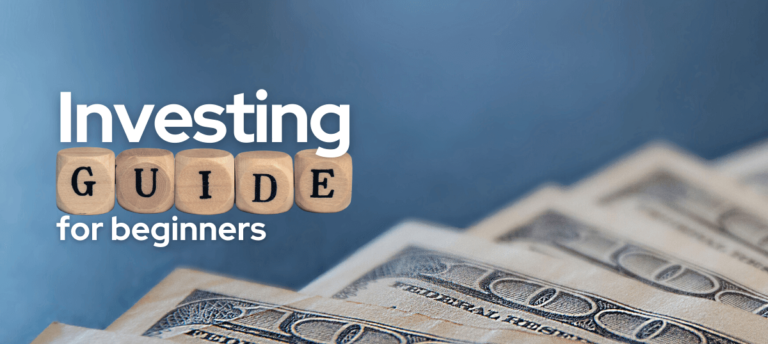Starting your investment journey can seem daunting. With countless options, complex terms, and varied strategies, it’s easy to feel overwhelmed. But the truth is, anyone can invest. The key is to start with simple steps, build your knowledge, and stay consistent. This guide will walk you through the basics of investing. Whether you’re just starting or seeking to refine your strategy, this article will offer clear, actionable advice.
Key Points:
- Begin with understanding your financial situation.
- Set clear, realistic investment goals.
- Learn the different types of investments.
- Understand the risks and returns.
- Start with small amounts.
- Diversify your portfolio.
- Stay informed but avoid overreacting to short-term market movements.
Consider Professional Help

Financial advisors can provide personalized advice based on your unique situation and goals. They can help you build a diversified portfolio and guide you through difficult decisions. But keep in mind that financial advice often comes with fees, so weigh the costs and benefits.
Alternatively, you can join an online community of traders and investors, such as Warrior Trading. It offers courses and training programs tailored for those new to day-trading. With accessible and easy-to-understand content, it’s an excellent resource for beginners interested in learning more about the world of trading.
Assess Your Financial Situation
This means understanding your income, expenses, debts, and savings. You need to know how much you can afford to invest without jeopardizing your financial security. Make sure you have an emergency fund set aside. Ideally, this fund should cover three to six months of living expenses. Having this cushion allows you to invest without fear of needing to pull out money unexpectedly.
Set Clear Investment Goals
Your next step is to set clear, realistic investment goals. Think about what you want to achieve with your investments. Are you saving for retirement, a down payment on a house, or your children’s education? Having specific goals will help you determine the right investment strategy. It will also keep you focused and motivated, even during periods of market volatility.
Start Small with Simple Investments

Begin with simple investments like index funds or exchange-traded funds (ETFs). These investment options are low-cost, and they offer broad exposure to the market. By investing in a diversified group of stocks or bonds, you reduce the risk of losing money on a single company or sector. You can buy these funds through online brokers, and many allow you to start with as little as $100.
Learn About Different Types of Investments
There are many types of investments, each with its own risks and rewards. Stocks represent ownership in a company. Bonds are loans you give to companies or governments, which pay you back with interest. Mutual funds pool money from many investors to buy a variety of stocks or bonds. Real estate allows you to earn rental income or profit from property value increases.
You don’t need to understand every detail right away. Start with the basics and gradually deepen your knowledge. The more you learn, the better equipped you’ll be to make informed decisions.
Understand Risks and Returns
Higher potential returns often come with higher risks. Stocks, for example, can offer significant returns, but they can also lose value. Bonds are generally safer, but their returns are lower.
Before investing, consider your risk tolerance. How much are you willing to lose in the short term? Younger investors may be able to take on more risk since they have time to recover from losses. Older investors may prefer safer investments to protect their capital.
Diversify Your Portfolio

This means spreading your money across different types of investments to reduce risk. A diversified portfolio might include stocks, bonds, real estate, and even cash. By not putting all your eggs in one basket, you protect yourself against significant losses.
Be Aware of Fees and Taxes
There are fees and taxes associated with buying, selling, and holding investments. These can eat into your returns if you’re not careful. Brokerage fees, management fees, and mutual fund expense ratios are some common costs. Additionally, you’ll need to pay taxes on any profits you make.
Make sure you’re aware of the fees and taxes before you invest. Look for low-cost investment options and consider holding investments for the long term to minimize taxes. A tax-advantaged account, like an IRA or 401(k), can also help reduce your tax burden.
Automate Your Investments

Many brokers offer automatic investment plans that let you set up regular contributions to your investment account. By automating your investments, you ensure that you’re consistently adding to your portfolio, regardless of market conditions. This strategy, known as dollar-cost averaging, helps reduce the impact of market volatility on your investments.
Avoid Trying to Time the Market
Many beginners attempt to buy low and sell high, thinking they can predict when prices will rise or fall. In reality, timing the market is incredibly difficult, even for experienced investors. Instead of trying to time the market, focus on investing regularly and staying invested for the long term. Over time, this approach is more likely to yield positive results.
Review and Adjust Your Portfolio Regularly
Your investment goals and risk tolerance may change over time. That’s why it’s important to review and adjust your portfolio regularly. If your goals or financial situation change, you may need to make adjustments to your investments. For example, as you approach retirement, you might want to shift toward safer investments. Regularly reviewing your portfolio ensures that your investments remain aligned with your goals.
Final Thoughts
Investing doesn’t have to be complicated. By taking small, simple steps, you can build a strong foundation for your financial future. Start by assessing your financial situation, setting clear goals, and choosing simple, diversified investments.
Stay informed, but avoid reacting impulsively to short-term market movements. Keep fees and taxes in mind, and automate your investments to stay on track. Finally, remember that investing is a long-term commitment. Stay patient and disciplined, and you’ll be well on your way to achieving your financial goals.

